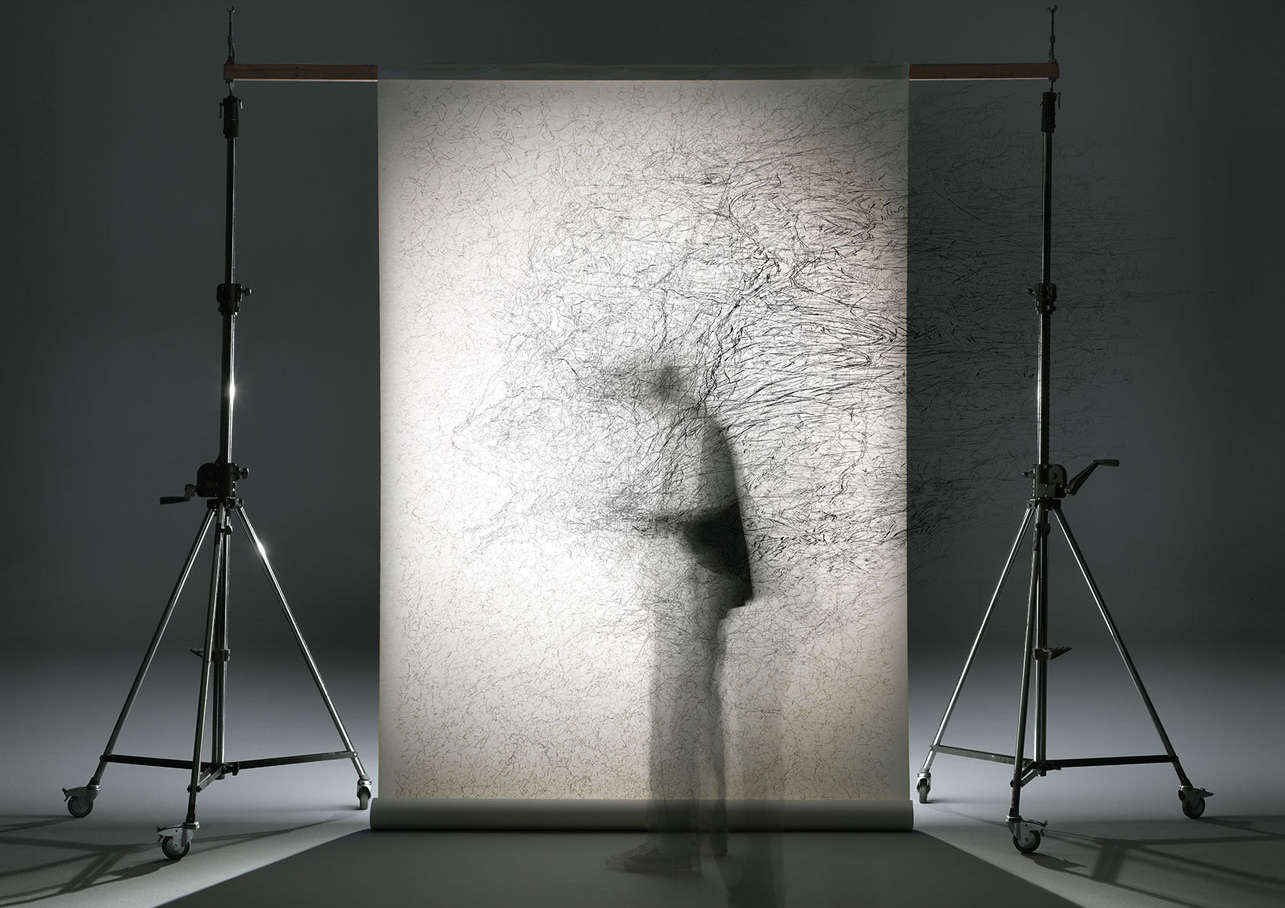Bertrand Flachot (Paris, 1955) is an artist who draws on the boundary between photography and drawing, word and form, the visible and the perceivable. For more than 30 years, his research has been moving along the textures of memory, perception and language. His works - which often take the form of large visual cartographies - arise from photographs that the artist traverses with minute tracings, almost invisible lines, graphic stratifications that transform the image into a mental place, a landscape of interiority.
Bertrand Flachot’s is a poetics of detail, of the trace, of settled time. His work is constructed as a seismography of the sensitive - to use his words - in which the graphic gesture becomes a vehicle of memory, a fragment of vision, an emotional vibration. Through a dialogue between photography, drawing and writing, Flachot composes inner landscapes, mental maps that transcend the visible to reach what can only be perceived with the inner gaze.
His mark, often subtle and almost invisible, is layered on the photograph, traversing it, sculpting it and transforming it, in a process of superimposition and erasure, of coverage and revelation. The result is a new, hybrid image that does not allow itself to be classified. In these works, as Bruno Dubreuil writes, the fluctuating stroke seems “a kind of seismographic agitation,” a line that glides freely across the screen, independent of the hand that guides it.


Trained at the École nationale des arts décoratifs in Paris between 1973 and 1978, Flachot frequented circles close to body art and performance, studying with figures such as Hervé Fischer as part of the École d’art sociologique. The influence of artists such as Michel Journiac, Hermann Nitsch and Jackson Pollock helped form a conception of art as a bodily, physical experience in which gesture precedes meaning, and the work takes shape in space as much as on the surface. “The discovery of Jackson Pollock’s work,” he told Gabriele Landi in an interview, “was a real thunderbolt that transformed me from an amateur painter into a full-fledged artist. I remember very well passionately consulting reproductions of his drawings and etchings, as well as Hans Namuth’s photographs of him in action in his studio. This transition from easel painting to the practice of ’all over’ still questions me today.”
Since his early days, Flachot has worked on the concept of pictorial installation, exploring unconventional forms of display. His “painted cubes,” three-dimensional structures that encompass the pictorial gesture in space, represent a milestone in his reflection on time and the memory of the creative act. But a dramatic event marked a rupture in his path: in 1990 a fire destroyed the atelier he occupied on the Quai de la Seine, reducing years of work, works and archives to ashes.
After the tragedy, the artist retired to the Seine-et-Marne countryside, to the places of his childhood. This return to his origins turns into a new phase of his research, in which nature - the woods, the branches, the billows - becomes a privileged observatory for the study of the sign. The landscape is no longer just the subject, but becomes the plot, the very substance of the work. Flachot observes the changing seasons, works the land, and meanwhile resumes drawing, photographing, composing.
With the advent of digital in the early 2000s, the artist is able to renew his approach to cross media. The graphics tablet becomes a natural extension of his body, a tool that allows him to draw with his eyes closed, “blind,” as he likes to say. The stroke no longer arises from direct contact between hand and surface, but from a dissociation that sharpens perceptual intensity. “Travailler à l’aveugle,” he says, drawing without seeing, without checking, as if the mark were a form of automatic writing of the body and memory.


In Bertrand Flachot’s work, writing is no longer language in the strict sense. It does not communicate, inform, or describe but becomes visual matter, a calligraphic gesture, a rhythmic structure. It frees itself from meaning to become sign. In this sense, his works stand at the crossroads of the visual arts, concrete poetry and the philosophy of language. Flachot seems to seek a secret code, a hidden message within the image itself.
In the series Les Rets, for example, 365 photographic panels-one for each day-compose a visual network where lines intersect like “pièges à visions,” sight traps that disorient and hypnotize the viewer. Each image is both autonomous and part of a whole, as if the overall work were a narrative without words, an intimate chronicle of passing time.
As François de Coninck observes, Flachot’s work sails “juste au-dessus de la ligne de flottaison,” that is, on the border between the visible and the submerged, between what surfaces to consciousness and what remains in the depths of memory. This line, which in nautics separates “living works” from “dead works,” becomes a metaphor for art itself: a place of transit, of transformation, of survival of images. Flachot’s photographs do not document but evoke, remember, rewrite the past through visual writing that is not meant to be read, but experienced.
 |
| Bertrand Flachot: cartographer of the invisible, explorer of the sign |
Warning: the translation into English of the original Italian article was created using automatic tools. We undertake to review all articles, but we do not guarantee the total absence of inaccuracies in the translation due to the program. You can find the original by clicking on the ITA button. If you find any mistake,please contact us.